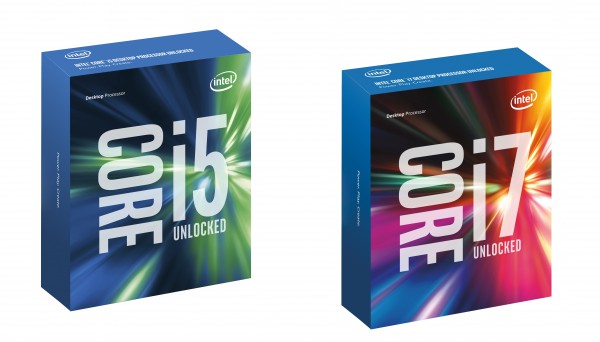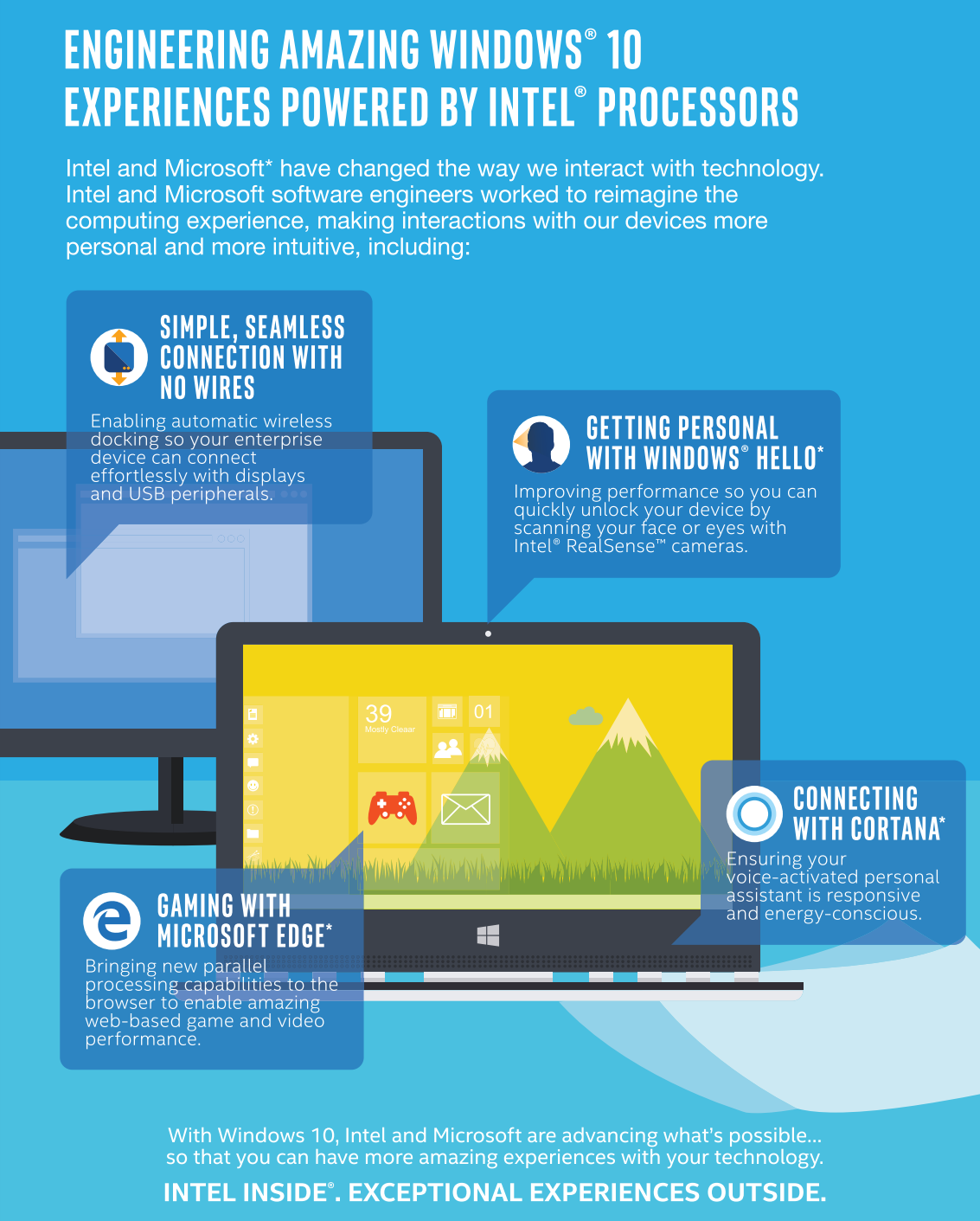
"Wintel", meaning Windows and Intel, is probably the most significant combo in the advancement of the personal computer. If it wasn't for the contributions of Microsoft and Intel, especially when combined, the entire computing landscape would be very different.
Today, Intel releases some information, including an infographic, about its contributions to Windows 10 -- Microsoft's latest, and some would say greatest, operating system. Yes, Intel helped to make Windows 10 better.
Cortana
Microsoft's virtual assistant, Cortana, provides a refreshing way to get information, set reminders, and more. According to Intel, Skylake processors help to make Cortana even better.
Douglas W. Fisher, SVP and GM, Software and Services Group for Intel Corporation explains, "for platforms based on the new 6th Generation Intel Core processor family, Intel and Microsoft are enabling the keyword spotter algorithm, which listens for phrases like 'Hey Cortana' to be offloaded to a dual-core digital signal processor within the processor SoC. This offloading functionality, when available on Windows 10, will allow Cortana to continue listening for commands with improved energy efficiency".
Windows Hello
Windows Hello is one of my favorite Windows 10 features. Every day, I unlock my desktop using a USB fingerprint reader. While biometrics are not new, Windows 10's integration makes it easy to setup and use. Fingerprint readers are not as cool as using Intel's RealSense camera technology, however.
"Intel engineers developed software and protocols for the Intel RealSense camera to deliver a responsive and reliable Windows Hello experience. We analyzed the end-to-end system and devised performance optimizations to ensure that Windows Hello authenticates users on Intel platforms quickly. We also made sure that the system could operate across a wide range of lighting environments", says Fisher.
WiGig
If you haven't experienced WiGig, you are missing out. Quite frankly, it is like magic, and is more seamless on Windows 10. A small dongle connects to your monitor, keyboard, mouse and other hardware. Then, your laptop connects wirelessly to the dongle, transmitting video and communicating with the other devices.
If you think the video might lag, or be glitchy, I can assure you that you are wrong -- it is surprisingly flawless. Intel's technology is a game changer and could largely replace traditional docking stations in the future. Unfortunately, it cannot transmit electricity wirelessly to your laptop's battery!
Microsoft Edge
Microsoft's latest web browser is pretty good, but not yet fully baked. Expected functionality, like extensions, are not yet available. With that said, it is both very fast and stable. Browsing the web is satisfying with Edge. Apparently, Intel helped bolster the greatness of the web browser.
Douglas W. Fisher shares, "the close collaboration between Intel and Microsoft engineers delivered new levels of responsiveness, performance and power efficiency to existing HTML5 and JavaScript applications. Such improvements were made possible by new platform features like Intel Speed Shift Technology, which dramatically improves responsiveness by dynamically managing power states. Intel has also implemented SIMD.js, which brings Single Instruction Multiple Data capabilities to Microsoft Edge to deliver amazing performance for multimedia, gaming and visualization applications. SIMD instruction sets enable execution of the same operation on multiple values simultaneously by taking advantage of data-level parallelism".
Are you a Wintel fan? Do you love Windows 10? Check out the below infographic, and tell me in the comments.


